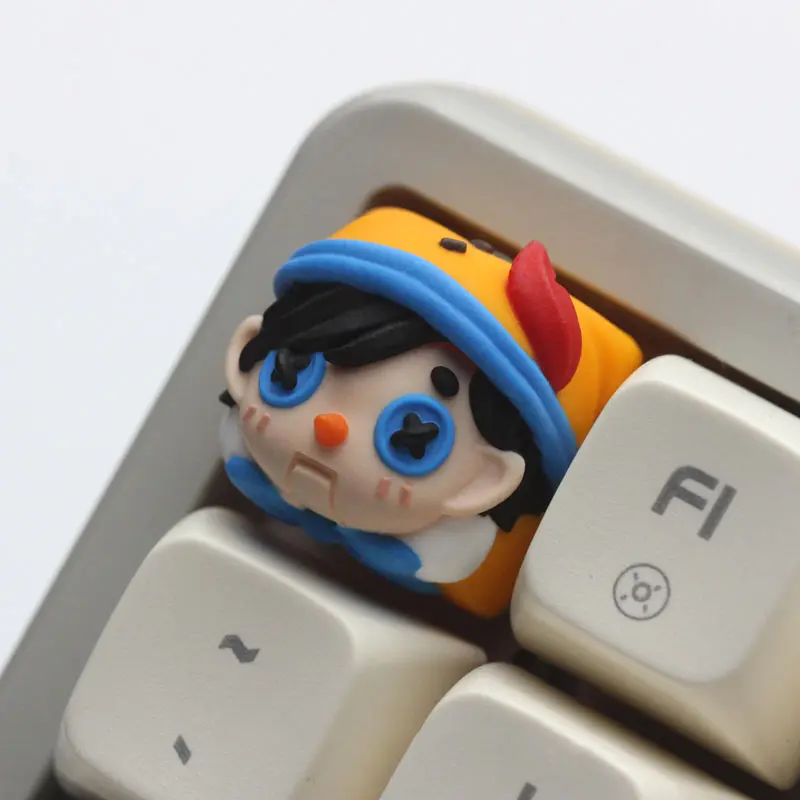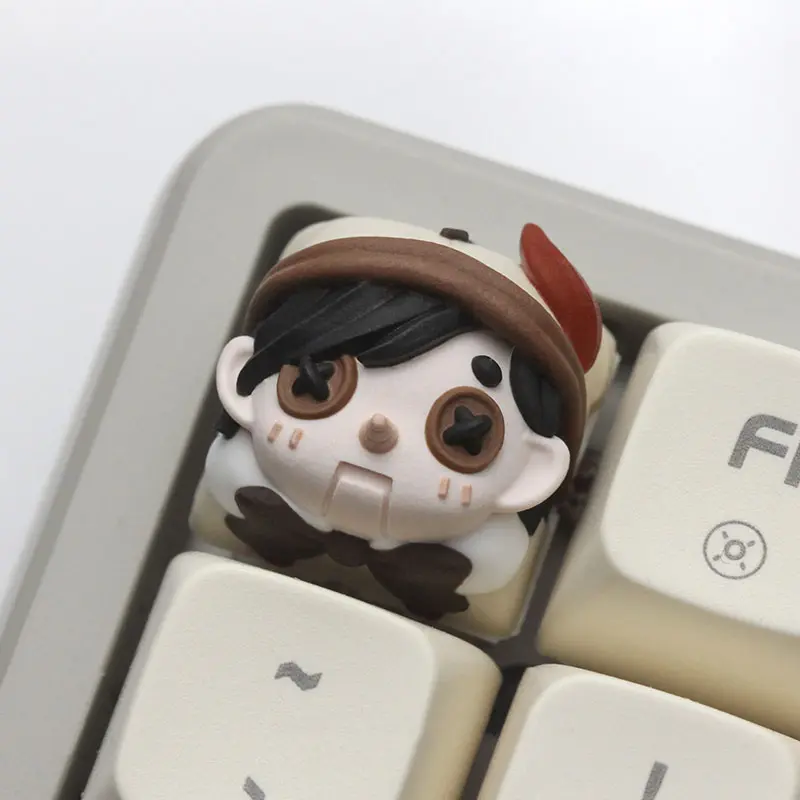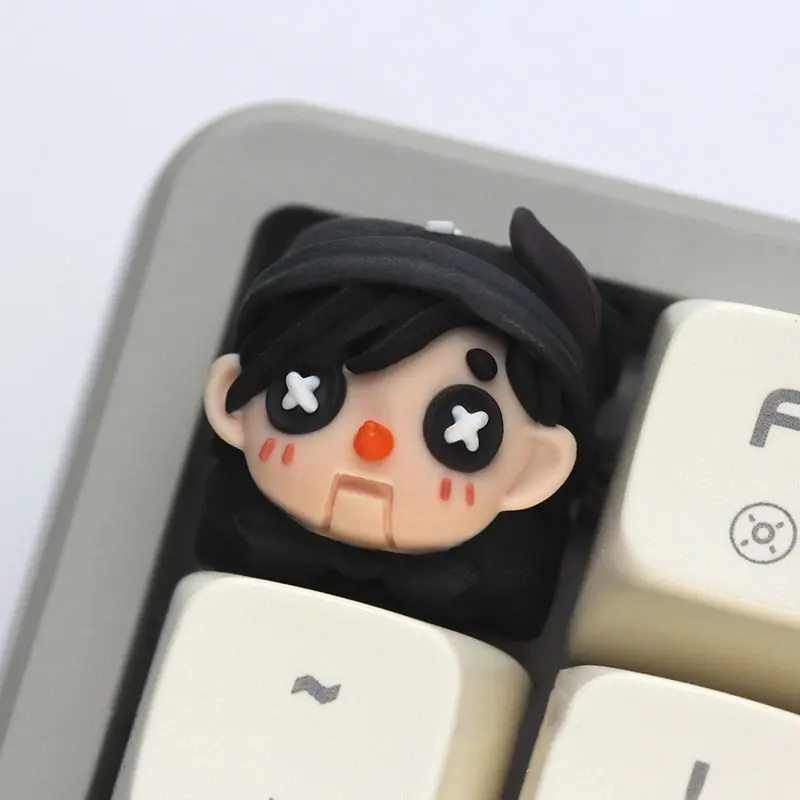Removing keycaps from your laptop can be a daunting task. Whether you’re looking to clean under the keys or customize your keyboard, doing it safely is crucial to avoid damaging your laptop’s most interactive component. This guide will walk you through each step, ensuring that you’re equipped with the know-how to remove and reattach your keycaps without a hitch.
Preparing Your Workspace

As you’re going to be dealing with some pretty tiny parts that have a knack for disappearing the second they pop off, so setting up a suitable workspace is essential. Here’s how to set yourself up for success.
- Turning Off the Laptop: Hit the shutdown button and give your laptop a moment to power down completely. Those indicator lights should all be off, signaling that the system is no longer active.
- Unplugging the Power Cord: If your laptop is connected to a power source, remove the plug from the wall socket. This cuts off any electricity supply, which is exactly what you want.
- Removing the Battery (If Possible): For laptops with removable batteries, flip your laptop over, slide the battery release latch, and gently remove the battery. If your battery is not removable, don’t worry; having the laptop shut down and unplugged is sufficient.
- Setting Up Your Work Area: Choose a clean, flat surface with good lighting. A desk or table will do nicely — steer clear of soft surfaces where things can get lost.
- Securing Small Parts: It’s super easy to lose them, and nobody wants to spend hours hunting for a missing ‘G’ or ‘Shift’ key. Grab something like a small bowl or any container really, to drop the keycaps into as you take them off.
- Ready Your Cleaning Supplies: Have your microfiber cloth and alcohol-free cleaning solution at hand for when it’s time to start the cleaning process.
Identifying Your Laptop’s Keycap Type
In the world of laptops, most keys fit into one of three types: scissor switch, butterfly, or mechanical. Figuring out what kind you’ve got under your fingers is key (no pun intended) to removing them safely. Let’s break down these types:
Scissor-Switch Keys
These keys operate similarly to two crisscrossed plastic pieces, much like a pair of scissors, hence the name. They snap together to create a stable base that supports the keycap from underneath. This design is quite common on many laptops because it provides a low profile without sacrificing the comfort of typing. Another advantage of scissor-switch keys is their quietness when pressed, which makes them a standard choice for shared spaces and open office environments.
Butterfly Mechanisms
The thinnest laptops out there tend to use butterfly mechanism keys. Their name comes from the components that resemble a butterfly’s wings, flaring out beneath each keycap. While they allow for a sleeker design, these mechanisms can be fragile and need extra gentle handling. They’re not strong like the scissor-switch or mechanical types, so any heavy-handed action could lead to damage.
Mechanical Switches
Mechanical switches are bulkier and more robust. Typically found on desktop keyboards, they’re recognized by the audible click sound and tactile bump when pressed, giving the user direct feedback for each keystroke. These switches have a spring inside them, making them durable and long-lasting. Though less common in laptops, if you come across these, you can generally feel more confident about removing the keycaps without causing harm.
Using the Right Tool for the Job

Keycap Pullers
Most keycap pullers look a bit like a small tong or a tweezer with a loop at the end. The idea is that it slides under the keycap on opposite sides, securing it so you can evenly pull upwards. This even pressure means you won’t be jerking the keycap around and risking damage to the delicate parts underneath. Keycap pullers are usually made of plastic or metal, and they come in different sizes to fit different keys. Some might even have a soft coating on their grips to prevent any scratching or slipping.
Alternative DIY Tools
Now, if you find yourself without a keycap puller, don’t worry. You’ve probably got some do-it-yourself tools around the house that can serve in a pinch. A flat-head screwdriver, for instance, can act as a lever to gently pry off the keycaps. Just slide it under the edge of the keycap and twist slowly to pop the cap off. Alternatively, tweezers might work if they can get a good grip on the sides of the keycap. A plastic card can be a surprisingly effective tool for popping off keycaps. The edge of a credit card or a gift card can be used to gently lever up the corner of a keycap, allowing you to lift it away without causing damage.
However, there’s an important rule to remember here: Be gentle. These aren’t specialized tools for the job, so it’s easy to slip up and apply too much force. This could send your keycaps flying across the room or worse, break them. Slow and steady wins the race when it comes to DIY tools.
The Removal Process
Carefully removing keycaps is a straightforward process, but it requires patience and precision.
Step-by-Step Guide on How to Remove Keycaps
Let’s walk through the steps to safely remove those keycaps:
- Positioning the Puller: Grab your keycap puller and slide its prongs under the edges of the keycap you’re aiming to remove. Make sure it’s hooked on properly — it should sort of cradle the keycap like a hammock.
- Applying Gentle Pressure: Now, press the handles of the puller together lightly. You’ll feel the tool grab onto the keycap. There’s no need for Hulk strength here; a soft touch will do.
- Popping Off the Keycap: With the keycap securely in the puller’s gentle embrace, lift up carefully. It should pop right off without much trouble. If it feels like it’s resisting, don’t force it — check to make sure the puller is correctly positioned.
Special Considerations for Different Keycap Types
Scissor switches require you to lift from one corner rather than pulling straight up to prevent snapping the plastic. For butterfly mechanisms, even more care is needed here; a bit of a wiggle here and there while you lift may be needed to get them off their hinges. Mechanical switches an usually handle a straight-up pull since they’re designed to be more durable. Still, treat them with respect and avoid unnecessary roughness.
Cleaning Underneath the Keycaps

Getting Ready to Clean
First things first, arm yourself with a damp microfiber cloth. Why microfiber? Because it’s gentle, won’t leave lint behind, and is good at trapping dirt. The damp part is crucial too — it should be just slightly wet, not dripping, as water and electronics are not best friends.
Choosing Your Cleaner
It should be alcohol-free to prevent any damage to the sensitive electronics or the finish of your keys. A little goes a long way here; you don’t want to soak the cloth, just get it moist enough to pick up dust and cut through the grime.
Wiping Down the Surface
Gently wipe around the exposed areas where the keycaps used to be. Don’t scrub too hard. You’re removing accumulated dust bunnies, not stubborn oven grease.
Blasting Away Debris
For those pesky crumbs and bits that are lodged in tight spots, use compressed air. Short, controlled bursts can send that hidden gunk flying out of there. But remember, short spritzes are enough; too much pressure and you could push debris deeper into your laptop or cause moisture build-up from the propellant in the can.
Drying Everything Off
Once you’ve banished the dust and wiped everything down, take a pause to ensure that everything is bone dry before you even think about putting the keycaps back on. Any moisture left behind can cause issues down the line.
Reattaching Keycaps
Lining Them Up
Take each keycap and hold it just above its rightful place. Every key has its own spot, and most will only fit one way, so there’s no room for mix-ups here.
Pressing Down
With the keycap in position, press down evenly. You’re not hammering a nail, so keep it firm but gentle. When you hear that satisfying click — that’s the sound of the keycap snapping back onto the mechanism underneath.
Testing It Out
Before you move on to the next key, give the freshly attached key a few taps. It should spring back up after each press, just like it did before. If it sticks or feels wobbly, it may not be seated right. If that happens, gently lift it off and try again.
Conclusion
Taking the time to remove and maintain your laptop’s keyboard can extend its life and make your typing experience more pleasant. You’d better follow these steps carefully, then you can ensure that your laptop remains in top condition, and the keys stay fresh and responsive.
